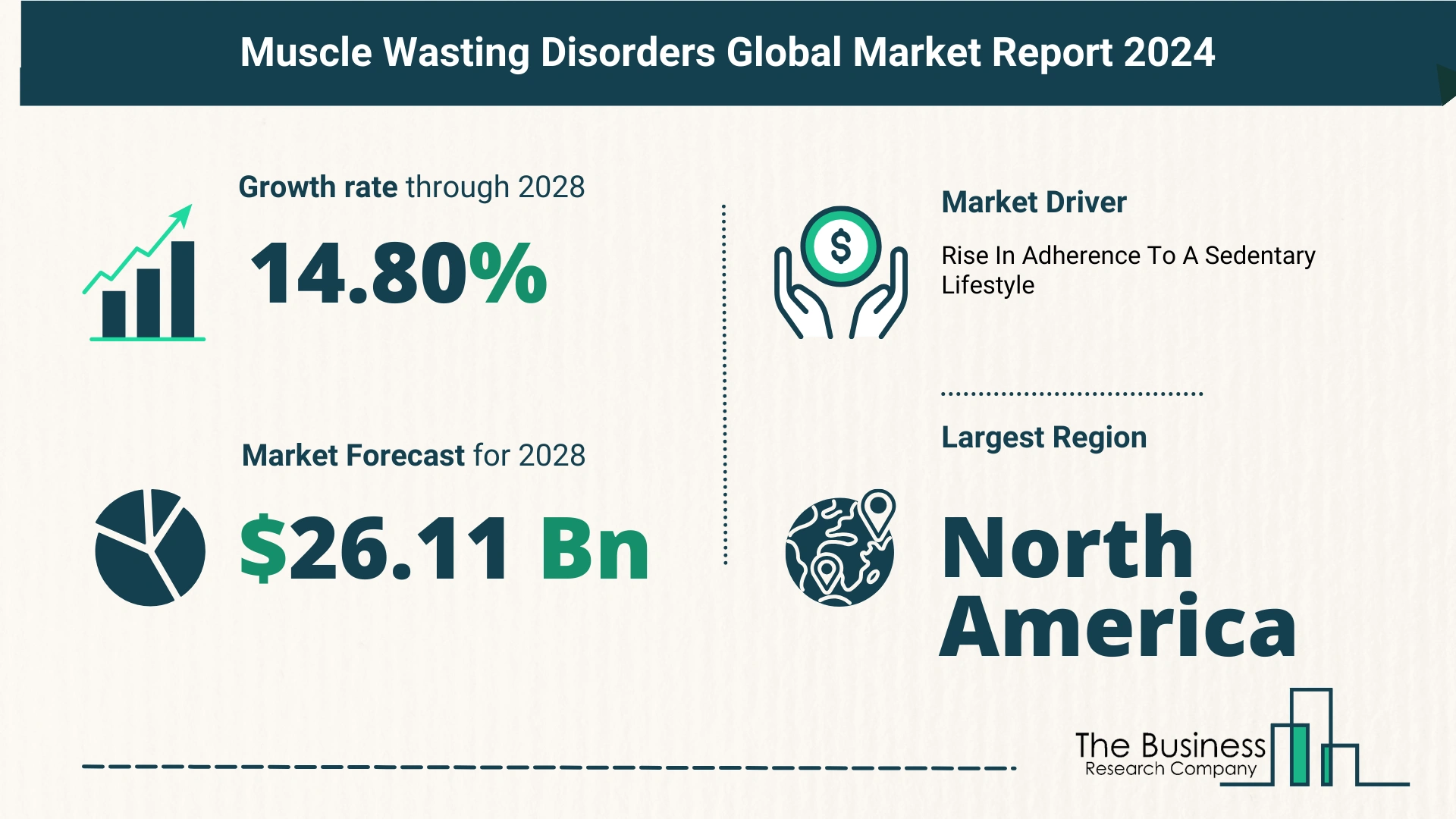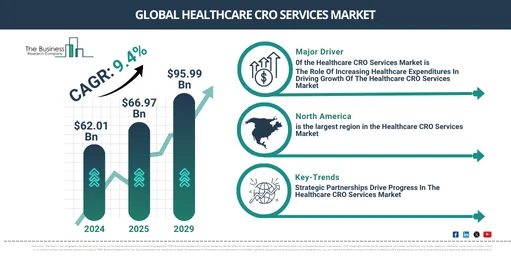Key Trends And Drivers In The Muscle Wasting Disorders Market 2024
The Business Research Company’s market reports offer an in-depth analysis on the market’s growth potential, major drivers, key trends and more.
Market Growth Dynamics
Recent Market Growth
- Significant Expansion: The muscle wasting disorders market has grown from $12.91 billion in 2023 to $15.06 billion in 2024.
- CAGR: Achieved a compound annual growth rate (CAGR) of 16.6% in recent years.
- Drivers: Growth attributed to aging population, rising chronic diseases, R&D advancements, early diagnosis awareness, and emerging therapies.
Future Market Projections
- Projected Growth: Expected to reach $26.11 billion by 2028.
- Forecast CAGR: Anticipated CAGR of 14.8%.
- Factors: Driven by regulatory support, patient advocacy, healthcare infrastructure development, globalization of clinical trials, and personalized medicine approaches.
Read More On The Muscle Wasting Disorders Market Report 2024 – https://www.thebusinessresearchcompany.com/report/muscle-wasting-disorders-global-market-report
Sedentary Lifestyle and Market Growth
Impact of Sedentary Lifestyle
- Growing Concern: Rising adherence to sedentary lifestyles is a significant factor fueling market growth.
- Consequences: Sedentary behavior contributes to muscle weakening and increased susceptibility to muscle wasting disorders.
- Statistics: Over 80% of adolescents and 27% of adults did not meet WHO physical activity recommendations in 2022.
Key Players in the Market
Major Companies
- Industry Leaders: Pfizer Inc., Roche Holding AG, Novartis AG, Sanofi, GSK, among others.
- Diverse Offerings: These companies provide a range of treatments and therapies for muscle wasting disorders.
Innovations in Therapeutics
Advancements in Gene Therapy
- Technological Breakthrough: Companies are focusing on gene therapy to address muscle wasting disorders.
- Example: Sarepta Therapeutics’ Elevidys, FDA-approved gene therapy for Duchenne muscular dystrophy, represents a significant innovation.
- Mechanism: Administered via single intravenous infusion to deliver targeted gene sequences.
Strategic Acquisitions
- Biogen’s Expansion: Biogen Inc.’s acquisition of Reata Pharmaceuticals enhances its rare disease portfolio with a focus on neuromuscular disorders like Friedreich’s ataxia.
- Strategic Benefits: Strengthens Biogen’s position in treating muscle wasting disorders.
Market Segmentation
Treatment Types
- Varied Approaches: Medications, Physical Therapy, Nutritional Therapy, Surgery, Gene Therapy, and Other Treatment Types.
Disorder Types
- Wide Spectrum: Includes Muscular Dystrophy, Amyotrophic Lateral Sclerosis (ALS), and Other Disorder Types.
End Users
- Diverse Applications: Hospitals, Rehab Centers, Specialty Clinics, and Other End Users.
Regional Insights
Geographic Influence
- Current Leader: North America led the muscle wasting disorders market in 2023.
- Growth Potential: Asia-Pacific expected to show the fastest growth in the forecast period.
Conclusion
The muscle wasting disorders market is experiencing rapid growth driven by factors such as increasing chronic diseases, technological advancements in gene therapy, and rising awareness of sedentary lifestyles’ impact. Innovations in therapeutic approaches, strategic acquisitions, and regional expansions underscore a dynamic market landscape poised for substantial growth and development in the coming years. As the market expands, collaborations and advancements in diagnostics and therapeutics will play pivotal roles in shaping future treatment paradigms for muscle wasting disorders globally.
Request for A Sample Of The Global Muscle Wasting Disorders Market Report:
https://www.thebusinessresearchcompany.com/sample_request?id=13706&type=smp


